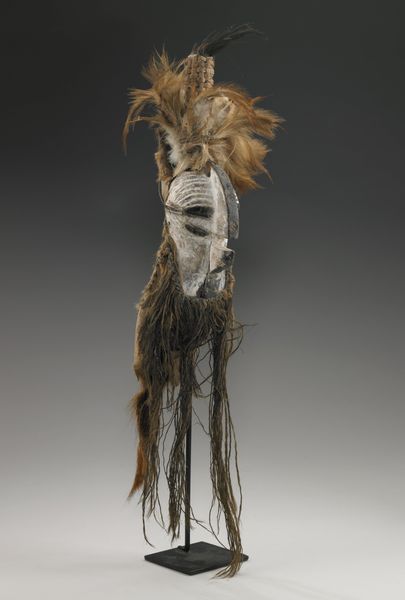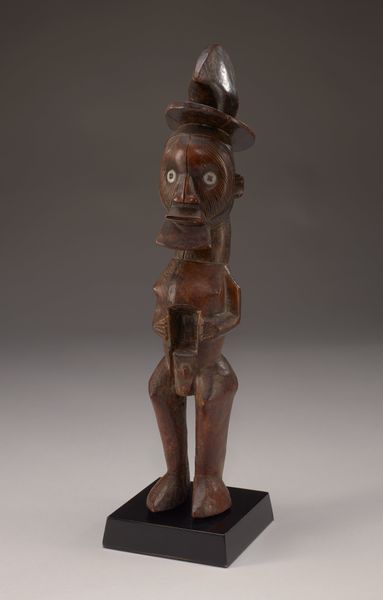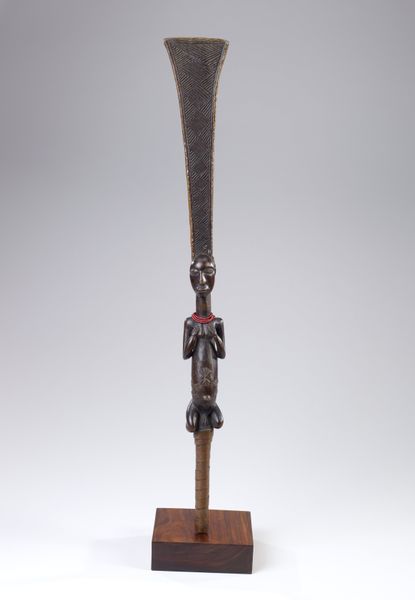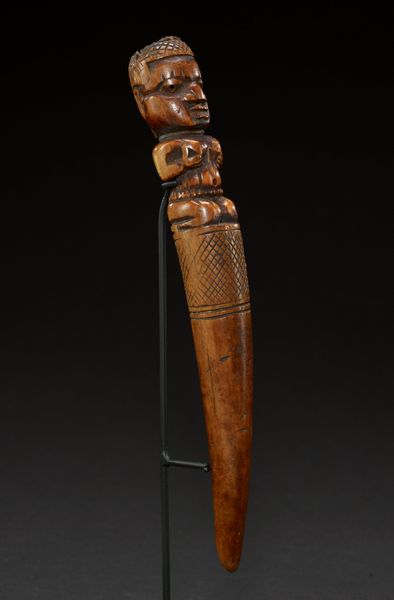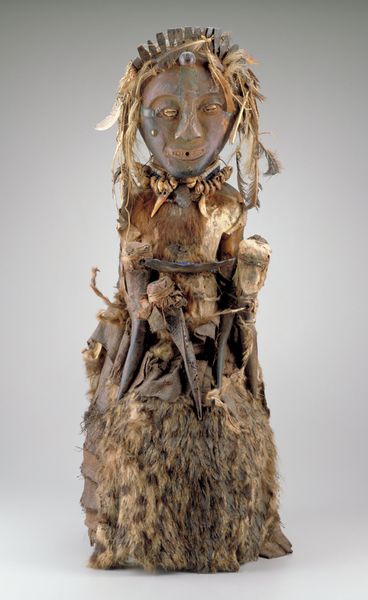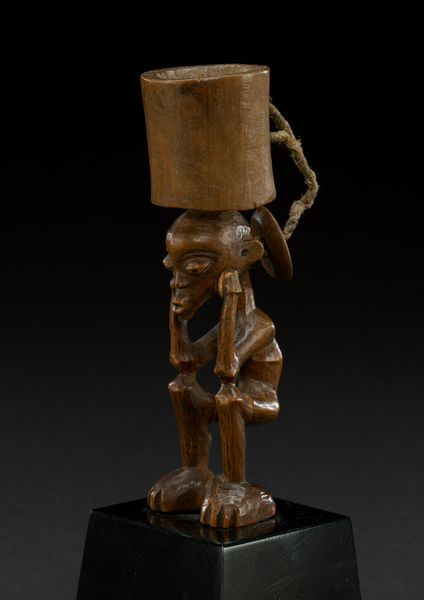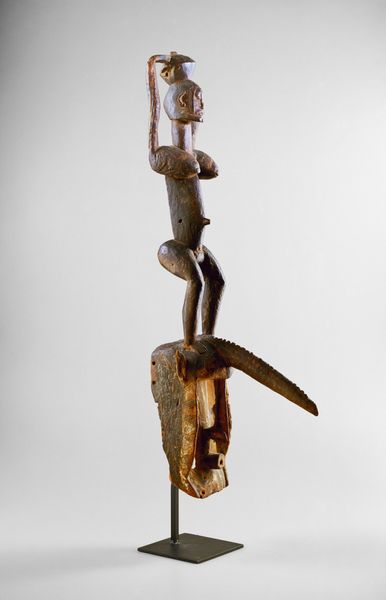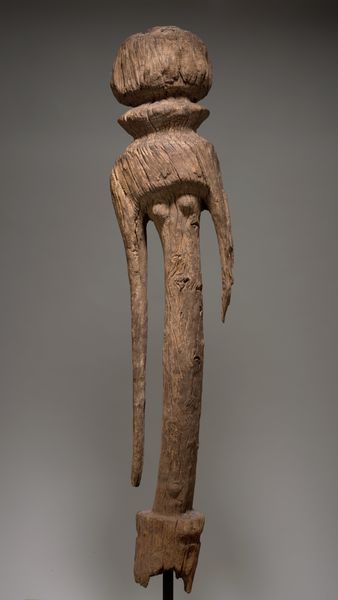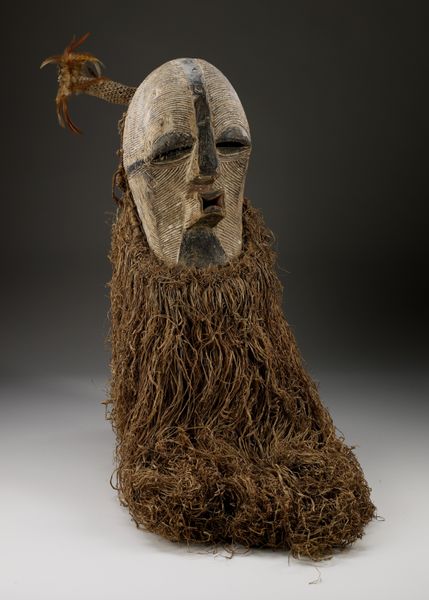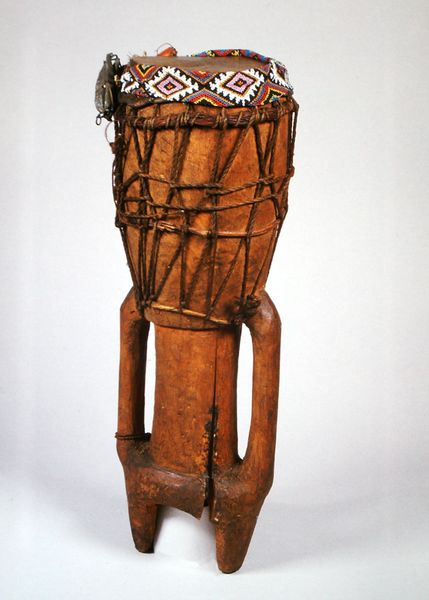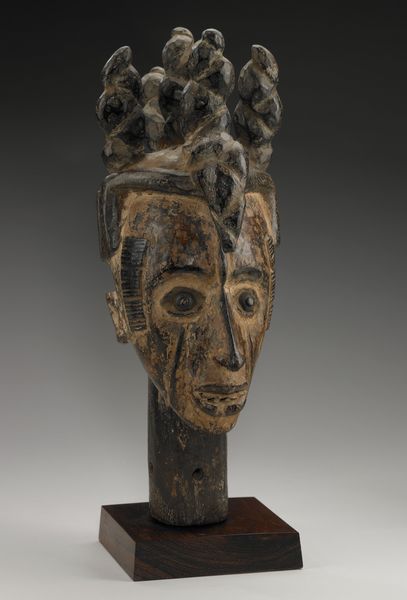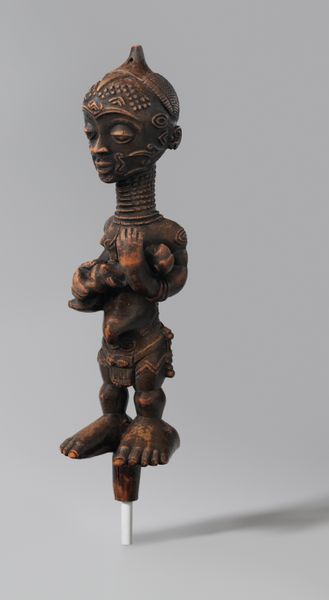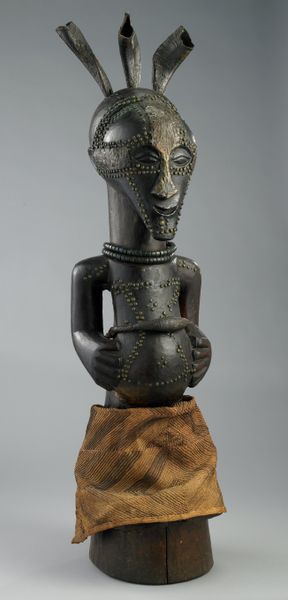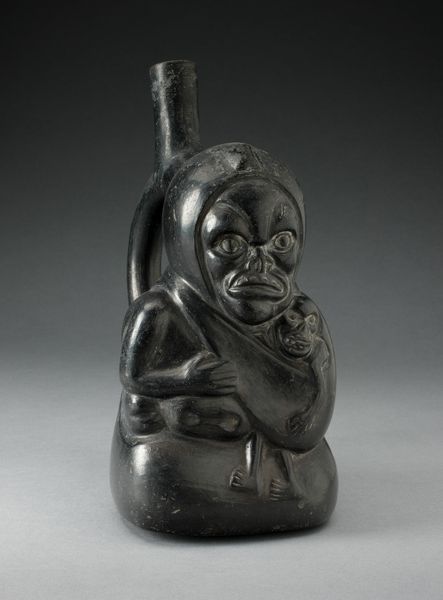
carving, sculpture, wood
#
portrait
#
african-art
#
organic
#
carving
#
sculpture
#
figuration
#
sculpture
#
wood
Dimensions: 33 × 17.8 × 14 cm (13 × 7 × 5 1/2 in.)
Copyright: Public Domain
Curator: The stillness of this sculpture strikes me first. It’s so contained. Editor: This is “Ritual Head,” created by a Hemba artist, likely sometime in the mid to late 19th century. The piece, housed here at the Art Institute of Chicago, combines carved wood with what appears to be animal fur. Considering that, and the title, what do you read into its ritualistic power? Curator: Power certainly resides here. The wood, polished and smooth, contrasts vividly with the untamed fur. I am curious about the figure's gaze – almost closed eyes suggests contemplation, a turning inward. What sociopolitical narratives do you feel are wrapped up in the Hemba use of these ritual objects, considering their location, purpose, and relationship to governance? Editor: We understand that objects like this played a significant role in Hemba ancestor veneration, where they served as conduits between the living and the departed. They were essential to legitimizing authority within the community, functioning as emblems of leadership and spiritual guidance. This specific head has all of the characteristic Hemba idealized features. The downcast eyes that you noticed were possibly supposed to signal a certain degree of respect to elders and power holders. The fur piece would have been chosen deliberately for its totemic link with a key ancestral figure, as well. Curator: The layered textures offer a compelling contrast. Wood represents refined, human artistry, while the raw fur reminds us of our ties to the natural world. The sculpture challenges binary oppositions such as civilization versus nature and the sacred and the profane by weaving together contrasting components and imbuing it with ancestral spirit. Editor: That’s a wonderful insight. To extend your analysis, consider the sculpture’s display history. It shifts the power dynamics depending on whether it resides in a private collection, a national museum, or a sacred Hemba space. The meaning, intention, and role of a cultural object will change in line with location and context. Curator: Right. We can't divorce the piece from its cultural origins and how that intersects with power, representation, and identity in museums like this. Seeing it here in Chicago reshapes the narrative, prompting fresh conversations about our colonial legacies. Editor: Exactly. Viewing it in this manner adds an additional stratum to its narrative. Food for thought, indeed.
Comments
No comments
Be the first to comment and join the conversation on the ultimate creative platform.
